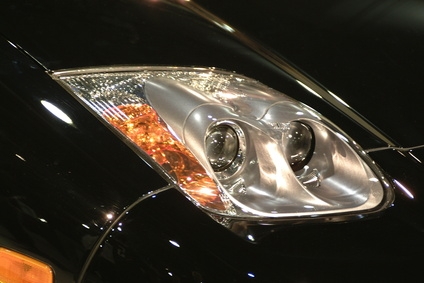
Projector headlights, also known as polyellipsoidal and bi-xenon headlights, are high-performance headlights, usually found in high-end luxury and sport automobiles, but also are available as aftermarket add-ons. The design and mechanics of projector headlights provide a number of advantages, including increased compactness and range, over classic reflector headlights.
As opposed to the classic dual-beam headlight design, which features two bulbs (one for high beam and one for low beam), a projector headlight uses only one bulb. Most projector headlights use HID Xenon bulbs, but halogen and, more recently, LED setups are available.
The single bulb in a projector headlight sits in front of an elliptical-shaped reflector, as opposed to the classic parabolic-shaped reflector. This elliptical shape means that all of the light is reflected towards a single focal point in front of the bulb, where it meets a shutter.
The shutter in a projector headlight sticks up from the bottom of the headlight, partially blocking the beam, so that it shines in a downward angle, towards the road. In addition, the top of the shutter is tapered, creating a lower beam on the left side (or right side, in left-hand traffic countries) and reducing light that is shone into oncoming traffic. When the driver switches to high beam mode, the shutter is lowered, allowing the headlight to shine unrestricted.
Since the shutter controls the shape of the beam in a projector headlight, it may use a simple objective lens, which serves only to distribute the pre-shaped beam evenly.